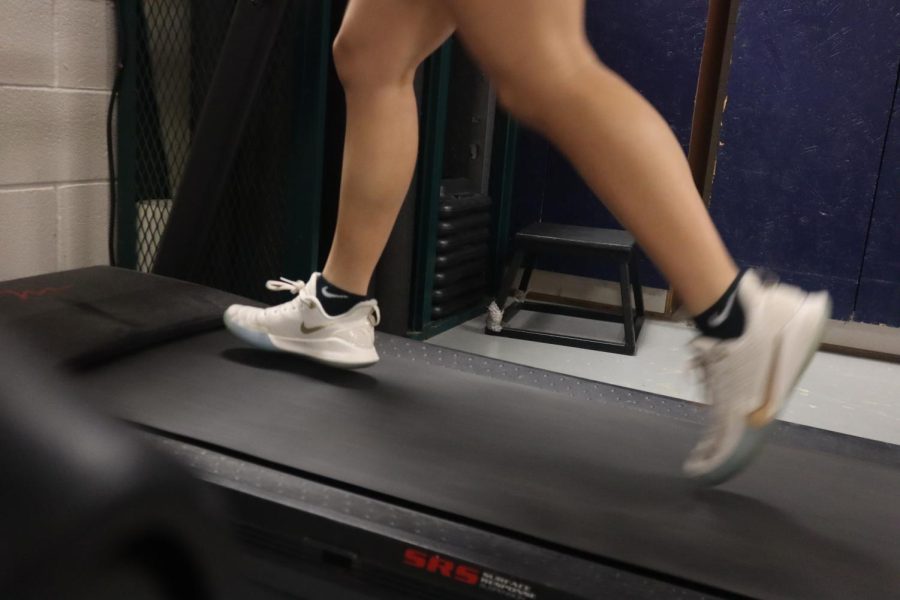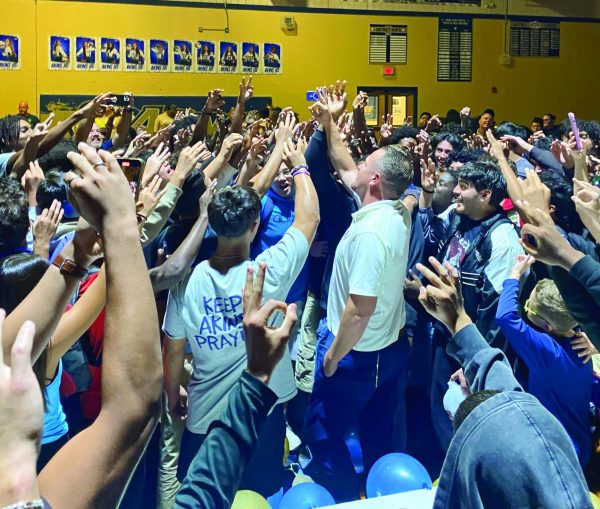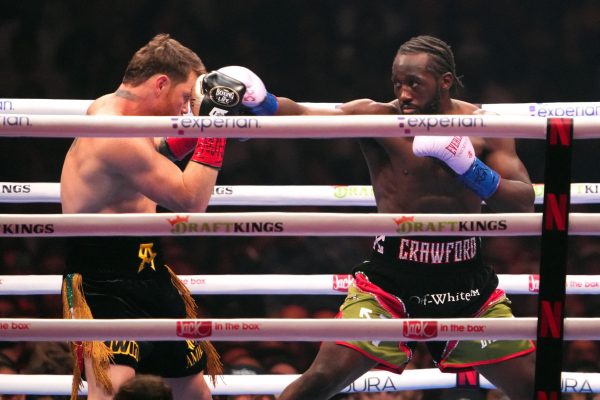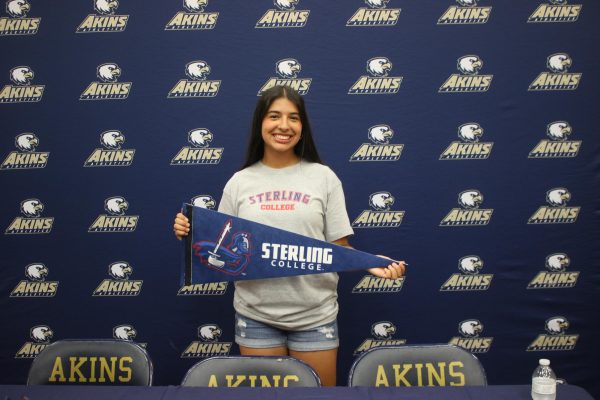Athletes adapt to new Return-to-Play rules after COVID infection
An Akins athlete runs on a treadmill in the athletic trainer’s office to test their heart and lung performance for the “Return-to-Play Protocol” that is used to determine if they are ready to return to competitive sports after having a COVID-19 infection.
In addition to battling opponents, Austin ISD athletes have faced the challenge of dealing with COVID-19 infections that skyrocketed with the spread of the Omicron variant in January.
Complicating matters, Austin ISD implemented a new “Return to Play Protocol” that requires all athletes who have had COVID-19 to be evaluated and cleared by the campus trainer before they can return to competing with school teams. Athletes and coaches have expressed mixed feelings about the protocols, which are designed to keep students safe but also extend the time away from playing the sports they love.
Akins athletic director Joesph Saxe said the protocol is important to protect student safety.
“COVID does have different complications from person to person,” Saxe said. “The first and most important thing just to make sure the athletes are safe before they return to sports with COVID affecting the cardiovascular system, heart rate, and breathing. That’s everything that athletes do.”
Saxe acknowledged that it is frustrating for Austin ISD athletic programs when they compete against teams in school districts that don’t follow the same protocols. He said that it can put teams like Akins at a competitive disadvantage.
“It can be a little frustrating for sure, and I know especially for our seniors where they’re having to miss more games, but safety is paramount,” he said. “So I know it’s it can be frustrating, but it ensured the safety of our athletes.”
Basketball coach Ben Grayczk said at other schools with different COVID protocols there are students who test positive without showing symptoms that are still able to play. This has given schools with more lenient protocols a competitive advantage, he said. This is particularly difficult for Akins teams, which compete against some of the best in the state.
Athletic trainer Stacie Salazar, who oversees the Return-to-Play protocol at Akins, said the number of days an athlete could be away from play can vary greatly depending on the circumstances.
“So let’s say one of our athletes gets notified that they’re in close contact. So maybe they’re vaccinated. Maybe they’re unvaccinated. The parent chooses to keep them home for four to five days. On that fifth day they test and now they test positive,” she said. “So now they’re out again for another five days. OK, so now we’re already up to 10 days right here. So they recover, they feel better, but now they got to return-to-play protocol. So that’s going to be another three to five days. And so that kid has now missed 15 days.”
Salazar said when athletes do return after a long absence, they are often not in the same physical condition they were before having COVID.
“I think you had to take it day by day, which is kind of the importance of that protocol to kind of get them back into that shape that they were in,” she said. “And then you know, as much as we do want to win and be competitive, it all goes back to player safety.”
Salazar said it has been hard on the athletes who sometimes feel like they are letting their teams down when they are COVID positive.
“You don’t want to miss any games and that’s probably been the hardest part for us as coaches,” she said. “They’re sick and they feel bad and then a lot of them feel like they’re letting the team down and we can’t control when we catch it. So not only do we see them frustrated with disappointing their teammates and their coaches and stuff like that, but then when they come back they’re not the same athlete that they were because of the lack of activity and so then they’re frustrated in that.”
Your donation will support the student journalists of Akins High School. Your contribution will allow us to purchase equipment and cover our annual website hosting costs.
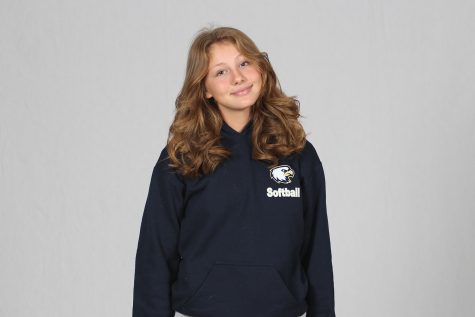
Academy: New Tech
Number of Years on Staff: New
Title: Sports Editor
Why do you enjoy being on staff? I enjoy being able to share my ideas and thoughts about certain topics
What do you do for fun? I like to listen to music and hang out with friends
What are your hobbies? I play select softball and I am on the Akins Varsity softball team
Hopes & Dreams after high school? I want to be a photographer after high school
Hidden Talent: I can move one eye to look forward and one eye to look crossward

